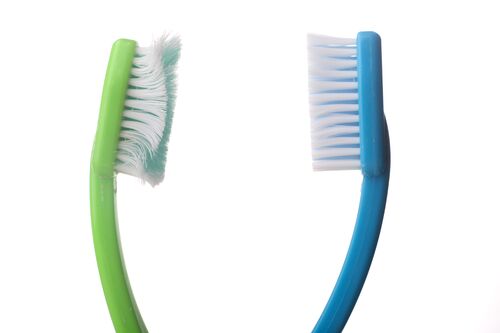Toothbrushes
Manufacturers are producing a greater variety of toothbrushes incorporating different designs for handles, heads and bristles.
Size
For children, it is currently recommended to use a soft/medium toothbrush with a small head. Small-headed toothbrushes give better access to the back of the mouth. A general guide is that the size of the brush should be selected to suit mouth size, with smaller brushes being more suited to smaller mouths.
Handles
Whether straight handles or angled handles are used is a matter of personal preference. People who experience difficulty cleaning their back teeth may find it easier using an angled brush; in any case the best brush is the one that you can clean your teeth thoroughly without causing trauma. Toothbrush handles can also be adapted by the user to improve the grip e.g. you can cut a small slit in a tennis ball and slide it onto the handle of a toothbrush.
Electric Toothbrushes
Electrical or battery operated toothbrushes are useful for people who have difficulty holding and manoeuvring an ordinary toothbrush, such as persons with poor motor control or a physical disability. Powered brushes with brush heads that rotate first in one direction and then the other (oscillate/rotate) are more effective at removing plaque than manual toothbrushes and can reduce gingivitis if used for over 3 months.
Replacing your toothbrush
It’s time for a change if….
- The bristles look worn – worn bristles aren’t as effective at cleaning your teeth and gums
- Your toothbrush is more than three months old
- You’ve been ill – germs can hide in the bristles and cause re-infection
